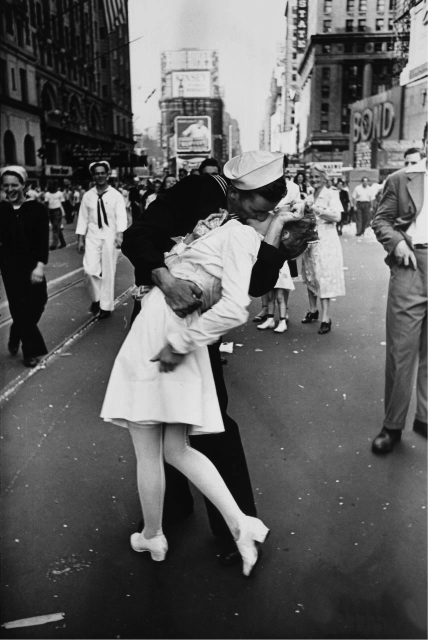Murder of a Vietcong by Saigon Police Chief by Eddie Adams, 1968
“Still photographs are the most powerful weapons in the world.”
The picture became an icon of the war.
However, this photograph is the proof that a first impact might mislead the viewer’s perception and beliefs.
Adams captured the scene of a man who is due to be shoot by a soldier.
The action is pitiless.
But what the picture does not reveal is the real story, the real reason why the prisoner is being killed.
Captain of Vietcong had executed dozen unarmed Vietnamese civilians before being caught by General Nguyen Ngoc Loan.
Yet the latter has not been justified for pulling the trigger.
The picture was able to label him as a villain for the rest of his life.
“The general killed the Vietcong; I killed the general with my camera”
Adams marked the end of both Vietnam War and Loan’s life with his camera, freezing an apparent ordinary war episode in the mind of every individual.
V-J Day, Times Square, 1945 or The Kiss by Alfred Eisenstaedt, 1945
“People tell me that when I am in heaven they will remember this picture.”
German photographer Eisenstaedt captured the joy and relief of the end of World War II on August 14, 1945 when he spotted a sailor kissing a young lady, whose clothes gave the impression that she was a nurse.
The fact the scene caught so much attention is because it visibly points out the contrast between love and war.
There is so much behind that kiss. It not only depicts a romantic long-lost love, it empathize the excitement of a country that is officially free from death and sorrow.
The photographer was able to click his camera at the right moment, leaving a permanent sense of peace in the soul of viewers.
Ludovica Parisi


